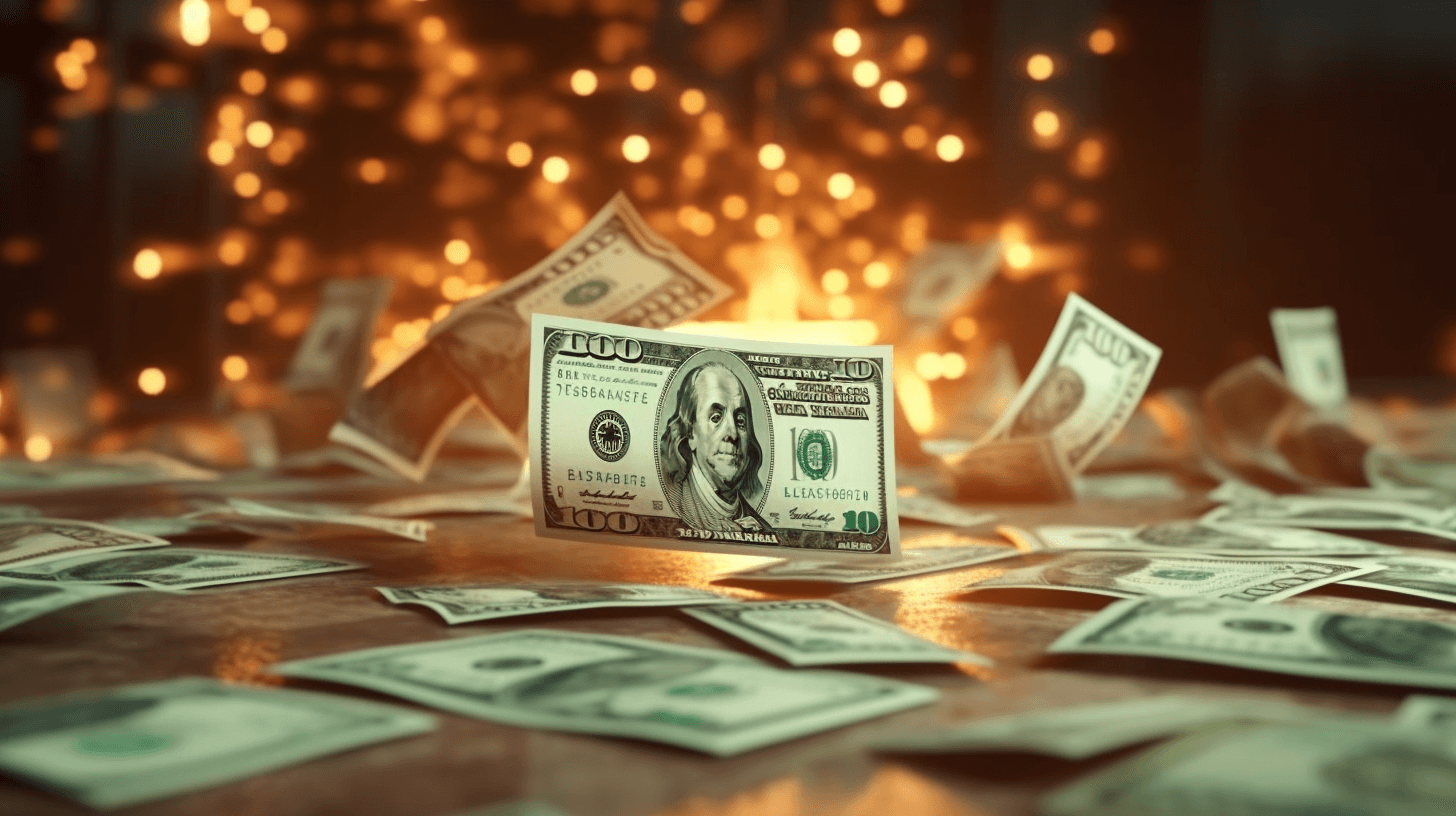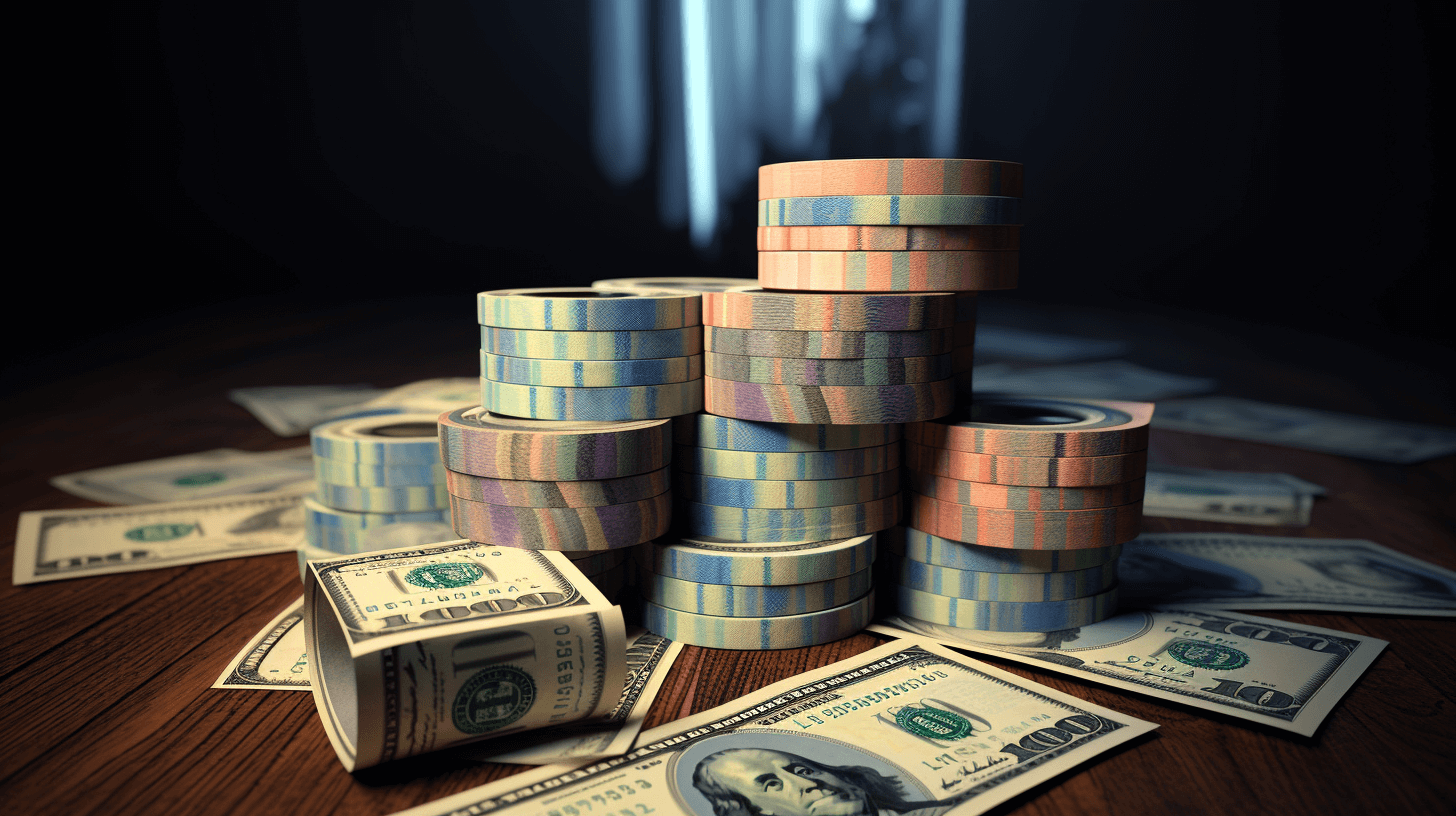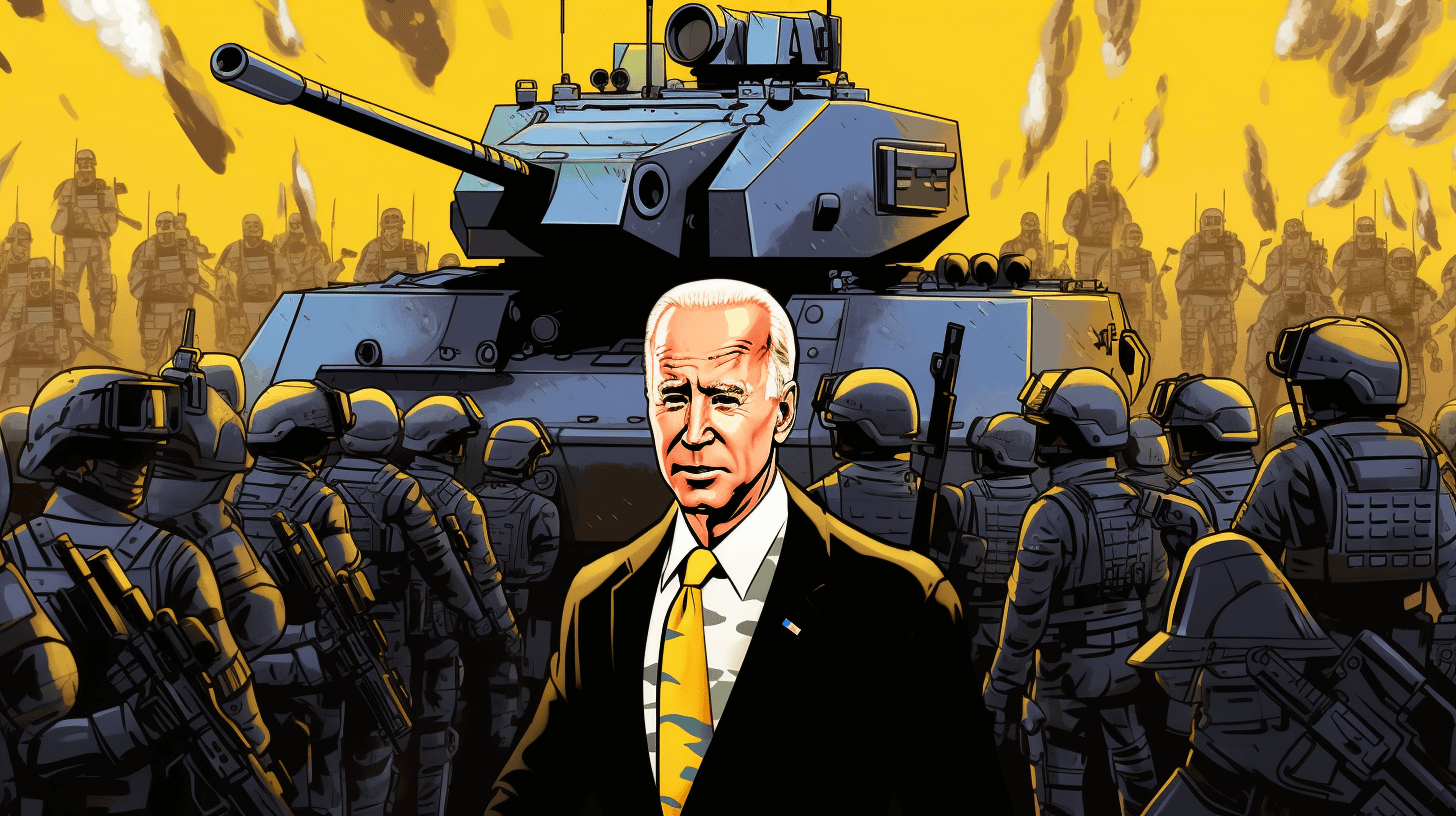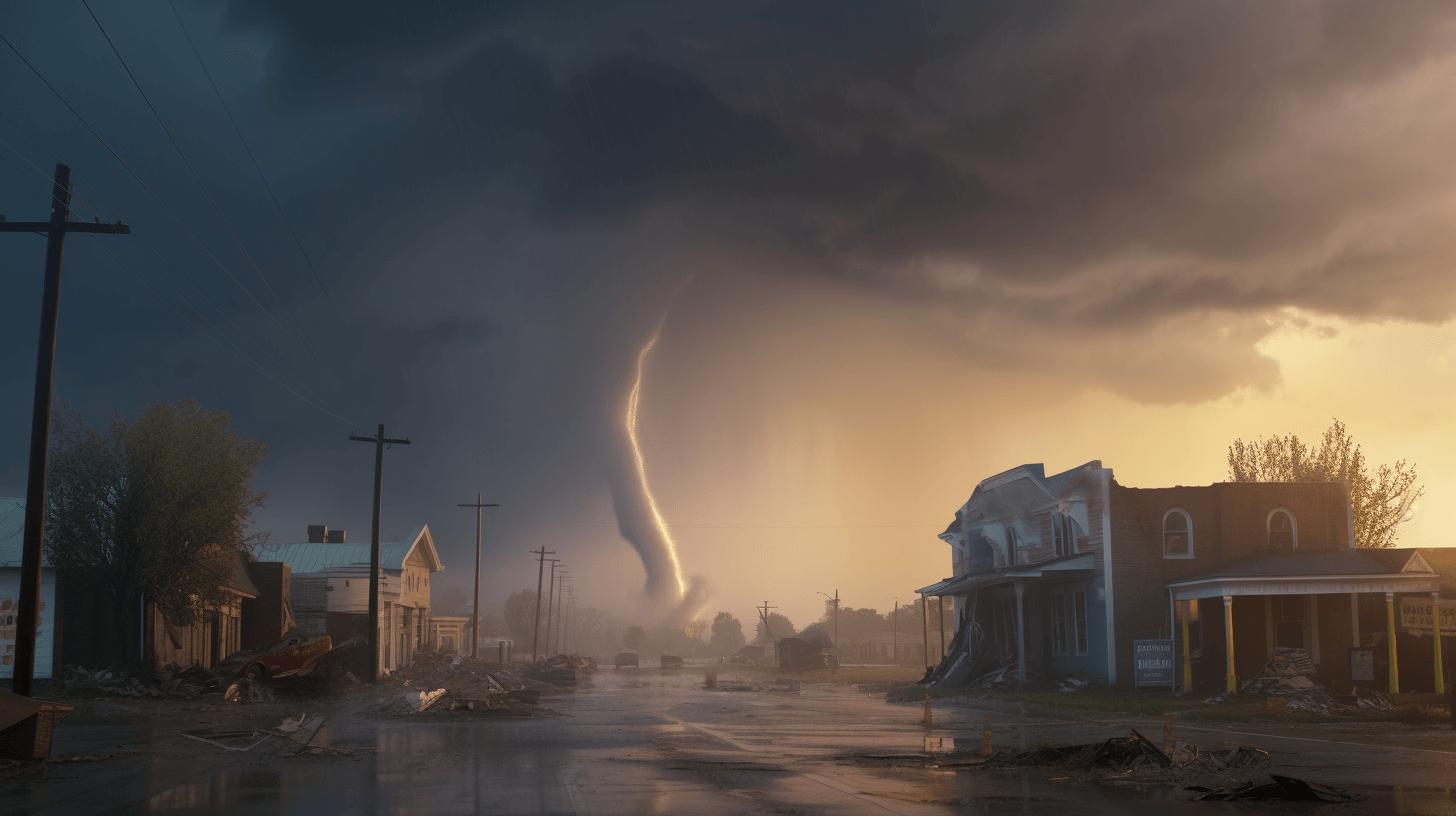💸📈 Heavy Kine Kala Trouble: Da U.S. Bonds Stay Mo’ Risky Den Evah 😲
No fo’ real kine, da kala problems stay causing choke stress fo’ da ‘risk-free’ U.S. bonds. Da short-term insurance costs fo’ dese bonds stay going tru da roof, an’ da long-term side effects from all da times we almost wen default on da debt stay weighing us down, says our guy who knows all about money. 🤔💭💰
Check dis out. Cuz of da debt ceiling beef, one part of da financial markets stay seeing da U.S. government as one mo’ risky borrower fo’ da next month or so den Bulgaria, Croatia, Greece, Mexico, da Philippines, an’ plenny oddah countries dat we nevah thought would be da rock solid base fo’ da modern global financial system. 🌍💵🏦
No get me wrong, I still get Treasuries in my own kala stash an’ except fo’ one big kine case, no mo’ signs yet dat investors all ova da world stay running away from Treasuries — or da U.S. dollar or da U.S. stock market, fo’ dat mattah. Da United States stay da core of world finance, an’ I believe dat it going stay dat way. 🇺🇸💰🌎
But one important but oftentimes overlooked part of da financial markets — da $30 trillion market fo’ credit default swaps — stay saying dat da debt ceiling standoff stay fo’ real kine serious. Da short-term costs fo’ insurance against a U.S. debt default stay skyrocketing right now. 🚀💲🔥
On top of dat, get signs dat Washington’s on-again, off-again flirts with debt default already stay causing some sneaky bad long-term effects in da global markets. Janet L. Yellen, da Treasury secretary, wen say dat if a U.S. debt default happens, it going be “one economic an’ financial catastrophe dat we went create.” All catastrophes get costs, an’ da markets stay struggling fo’ figure dem out. 🤷♀️📉💔
Da Deadlock 😑🔒🇺🇸 President Biden wen start talking about da debt ceiling with Speaker Kevin McCarthy an’ oddah congressional leaders but nevah wen make much headway. As tings stand, da Treasury says it going run out of its stash of “extraordinary measures” an’ hit da debt ceiling sometime in June. If Congress no act by den, da United States could run out of money. It’s possible dat it going stop paying its bills, including millions of Social Security checks, an’ dat it could default on its debt fo’ da first time. 😰💸📅
Da stock market stay focusing on oddah tings — like da persistent inflation, high interest rates, bank failures, da chance of one imminent recession an’ da intentions of da Federal Reserve, which wen tighten financial conditions fo’ mo’ than one year. But if da debt ceiling dispute no resolve until da last minute, no be surprised if da stock market take one big dive. Dat wen happen before, even without an actual default. Eventually, da stock market wen recover. 📉🏦🔄
Normally, Treasuries stay viewed as da safest investments. But now, one-month Treasury bills due in June stay seen in da markets as potential trouble spots. Their yields wen shoot up over da last week or two, pushing dem higher than da yields fo’ two- and three-month bills. Dat’s not da usual kine. 📅💰📊
In two or three months, da logic goes, da debt ceiling crisis going be pau. In da meantime, one-month bills stay carrying unusual risks. But some investors, like William H. Gross, who wen be known as da “bond king” when he wen run Pimco, say a default going be avoided an’ at da current prices, one-month Treasury bills stay bargains. 🤴💵🤞
Dey might be, but dat’s only cuz dey stay seen as risky. But Treasuries supposed to be risk-free assets. Almost all financial assets on da planet stay priced in relation to Treasuries, so you could argue dat if da U.S. Treasury defaulted, no mo’ safe place fo’ go. Undah dese circumstances, stay hard fo’ judge da safety of anything in da financial world. 🌎💸🔒
Default Insurance 📝💲🛡️ Short-term Treasuries not da only asset class directly affected by da U.S. debt ceiling. Worries also wen crystallize in da credit default swaps market. Dis is one arena fo’ da big kine institutional investors — hedge funds, banks, pension funds an’ da like — an’ not one place dat I usually spend choke time thinking about. But credit default swaps give insight about da unnecessary damage dat da political dysfunction in Washington stay causing on da credit of da United States. 🏦🤦♂️📉
Consider dat credit default swaps stay basically insurance. For one defined period, investors can get protection against losses from a debt default by a corporation or a government. Da United States stay da world’s financial powerhouse. But until 2011, it also was in a select group of countries with da world’s highest credit rating. Dat year, though, Standard & Poor’s wen lower its credit rating one notch cuz of da debt ceiling mess. 💔⬇️📈
Germany, on da oddah hand, still get one clean, triple A credit rating. Even though it no get da same kine influence as da United States, no surprise dat Germany stay seen as one better credit risk. But da extent to which dat stay true now stay unbelievable. 😲💶👍
“Look at da credit default swaps market an’ you get one sense of how much da United States stay being hurt by dese debt ceiling crises,” said Richard Bernstein, one former chief investment strategist at da old Merrill Lynch who run his own firm, Richard Bernstein Advisors. 🏦💔😔
I wen look. While da chance of one actual debt default stay still low, da cost of insurance fo’ U.S. bonds over da next 12 months was about 50 times da price fo’ Germany an’ about three to eight times dat of countries like Bulgaria, Croatia, Greece, Mexico an’ da Philippines. Dat’s according to FactSet data. Over longer periods — three, five and 10 years — da cost of insuring against a U.S. default drops. 🇺🇸💰📉
As you would expect, over longer periods, da United States stay seen as safer than countries with weaker credit ratings, but it’s still about three times more expensive to insure U.S. debt than it is fo’ Germany. An’ da yields on German sovereign bonds stay generally lower than dose fo’ Treasuries, Mr. Bernstein pointed out. Get plenty reasons fo’ dis, but one important one is da safety of German debt. “Even when they are resolved, dese debt crises stay putting da United States at a long-term competitive disadvantage,” he said. 🇩🇪💵🏆
Da Long View 🌅👀💡 In his latest annual letter to da shareholders of Berkshire Hathaway, Warren Buffett wen write about his continued optimism about da financial future of da United States.
“Despite our citizens’ love — almost excitement — fo’ self-criticism an’ self-doubt, I nevah yet seen one time when it made sense fo’ make one long-term bet against America,” he said. 🇺🇸💌💪
I share dat kind optimism, but I gotta admit, I stay worried. Da debt ceiling crisis is one symptom of political no-work-good. Da weird kine ting, da United States get da means fo’ pay its debts but might not do so because of an inability achieve one political agreement. So what we going do? 🤷♂️🤝🏦
Like Mr. Buffett, I believe most people should invest fo’ da long haul, using low-cost index funds. But I no stay totally confident dat da United States going act in its own best interests. So, unlike Mr. Buffett, I believe investors should hold stocks an’ bonds from da whole world, not just da United States. I stay hedging my bets, long- and short-term. 🌍💰📈
Fo’ da next month or two, I going boost my stash of relatively safe cash holdings in government money market funds an’ federally insured savings accounts. No option going be totally safe if da United States defaults, but I no see bettah alternatives. 💵💼🛠️
Dat’s da funny kine ting. In one crisis, even one caused by da United States, investors tend to look fo’ one safe place in Treasuries. Dat wen happen in 2011, an’ it’s likely fo’ keep happening, unless an’ until da United States finally lose its shine. 💎👀🇺🇸
Fo’ now, be careful with your own kala — an’ hope dat your elected officials preserve da full faith an’ credit of da United States. 🙏💰🇺🇸
NOW IN ENGLISH
💸📈 Serious Money Trouble: U.S. Bonds Are Riskier Than Ever 😲
Seriously, the money problems are causing enormous stress for the ‘risk-free’ U.S. bonds. The short-term insurance costs for these bonds are going through the roof, and the long-term side effects from all the times we nearly defaulted on the debt are weighing us down, says our financial expert. 🤔💭💰
Check this out. Because of the debt ceiling squabble, a segment of the financial markets sees the U.S. government as a riskier borrower over the next month than countries like Bulgaria, Croatia, Greece, Mexico, the Philippines, and many others that we never thought would be the solid foundation of the modern global financial system. 🌍💵🏦
Don’t get me wrong, I still hold Treasuries in my own investment portfolio and, except for one major incident, there are no signs yet that investors worldwide are fleeing from Treasuries — or the U.S. dollar or the U.S. stock market, for that matter. The United States is the core of world finance, and I believe that it will remain that way. 🇺🇸💰🌎
But one important yet often overlooked part of the financial markets — the $30 trillion market for credit default swaps — is indicating that the debt ceiling standoff is really serious. The short-term costs for insurance against a U.S. debt default are skyrocketing right now. 🚀💲🔥
On top of that, there are signs that Washington’s on-again, off-again flirts with debt default are already causing some subtle negative long-term effects in the global markets. Janet L. Yellen, the Treasury secretary, said that if a U.S. debt default happens, it would be “an economic and financial catastrophe of our own making.” All catastrophes have costs, and the markets are struggling to figure them out. 🤷♀️📉💔
The Deadlock 😑🔒🇺🇸 President Biden has started talking about the debt ceiling with Speaker Kevin McCarthy and other congressional leaders but hasn’t made much progress. As things stand, the Treasury says it will run out of its supply of “extraordinary measures” and hit the debt ceiling sometime in June. If Congress doesn’t act by then, the United States could run out of money. It’s possible that it will stop paying its bills, including millions of Social Security checks, and that it could default on its debt for the first time. 😰💸📅
The stock market is focusing on other things — like persistent inflation, high interest rates, bank failures, the chance of an imminent recession, and the intentions of the Federal Reserve, which has been tightening financial conditions for more than a year. But if the debt ceiling dispute isn’t resolved until the last minute, don’t be surprised if the stock market takes a big dive. That has happened before, even without an actual default. Eventually, the stock market recovered. 📉🏦🔄
Normally, Treasuries are viewed as the safest investments. But now, one-month Treasury bills due in June are seen in the markets as potential trouble spots. Their yields have shot up over the last week or two, pushing them higher than the yields for two- and three-month bills. That’s not the usual way. 📅💰📊
In two or three months, the logic goes, the debt ceiling crisis will be over. In the meantime, one-month bills carry unusual risks. But some investors, like William H. Gross, who was known as the “bond king” when he ran Pimco, suggest a default will be avoided and at current prices, one-month Treasury bills are bargains. 🤴💵🤞
They might be, but that’s only because they’re seen as risky. But Treasuries are supposed to be risk-free assets. Almost all financial assets on the planet are priced in relation to Treasuries, so you could argue that if the U.S. Treasury defaulted, there would be no safe place to go. Under these circumstances, it’s difficult to assess the safety of anything in the financial world. 🌎💸🔒
Default Insurance 📝💲🛡️ Short-term Treasuries aren’t the only asset class directly affected by the U.S. debt ceiling. Concerns have also materialized in the credit default swaps market. This is a space for the big institutional investors — hedge funds, banks, pension funds, and the like — and not a place that I usually spend much time contemplating. But credit default swaps provide insight into the unnecessary damage that political dysfunction in Washington is inflicting on the credit of the United States. 🏦🤦♂️📉
Consider that credit default swaps are essentially insurance. For a defined period, investors can get protection against losses from a debt default by a corporation or a government. The United States is the world’s financial powerhouse. But until 2011, it was also in a select group of countries with the world’s highest credit rating. That year, though, Standard & Poor’s lowered its credit rating one notch because of the debt ceiling debacle. 💔⬇️📈
Germany, on the other hand, still maintains a clean, triple A credit rating. Even though it doesn’t have the same influence as the United States, it’s no surprise that Germany is seen as a better credit risk. But the extent to which that’s true now is unbelievable. 😲💶👍
“Look at the credit default swaps market and you get a sense of how much the United States is being hurt by these debt ceiling crises,” said Richard Bernstein, a former chief investment strategist at the old Merrill Lynch who now runs his own firm, Richard Bernstein Advisors. 🏦💔😔
I checked. While the chance of an actual debt default is still low, the cost of insurance for U.S. bonds over the next 12 months was about 50 times the price for Germany and about three to eight times that of countries like Bulgaria, Croatia, Greece, Mexico, and the Philippines. That’s according to FactSet data. Over longer periods — three, five and 10 years — the cost of insuring against a U.S. default drops. 🇺🇸💰📉
As you would expect, over longer periods, the United States is seen as safer than countries with weaker credit ratings, but it’s still about three times more expensive to insure U.S. debt than it is for Germany. And the yields on German sovereign bonds are generally lower than those for Treasuries, Mr. Bernstein pointed out. There are many reasons for this, but one important one is the safety of German debt. “Even when they are resolved, these debt crises are putting the United States at a long-term competitive disadvantage,” he said. 🇩🇪💵🏆
The Long View 🌅👀💡 In his latest annual letter to the shareholders of Berkshire Hathaway, Warren Buffett wrote about his continued optimism about the financial future of the United States.
“Despite our citizens’ love — almost excitement — for self-criticism and self-doubt, I have never seen a time when it made sense to bet long-term against America,” he said. 🇺🇸💌💪
I share that kind of optimism, but I have to admit, I’m worried. The debt ceiling crisis is a symptom of political dysfunction. The strange thing is, the United States has the means to pay its debts but might not do so because of an inability to reach a political agreement. So what are we going to do? 🤷♂️🤝🏦
Like Mr. Buffett, I believe most people should invest for the long haul, using low-cost index funds. But I’m not completely confident that the United States will act in its own best interests. So, unlike Mr. Buffett, I believe investors should hold stocks and bonds from the entire world, not just the United States. I’m hedging my bets, both long- and short-term. 🌍💰📈
For the next month or two, I’m going to increase my stash of relatively safe cash holdings in government money market funds and federally insured savings accounts. No option will be entirely safe if the United States defaults, but I don’t see better alternatives. 💵💼🛠️
That’s the ironic thing. In a crisis, even one caused by the United States, investors tend to look for a safe place in Treasuries. That happened in 2011, and it’s likely to continue to happen, unless and until the United States finally loses its luster. 💎👀🇺🇸
For now, be careful with your own money — and hope that your elected officials uphold the full faith and credit of the United States. 🙏💰🇺🇸







